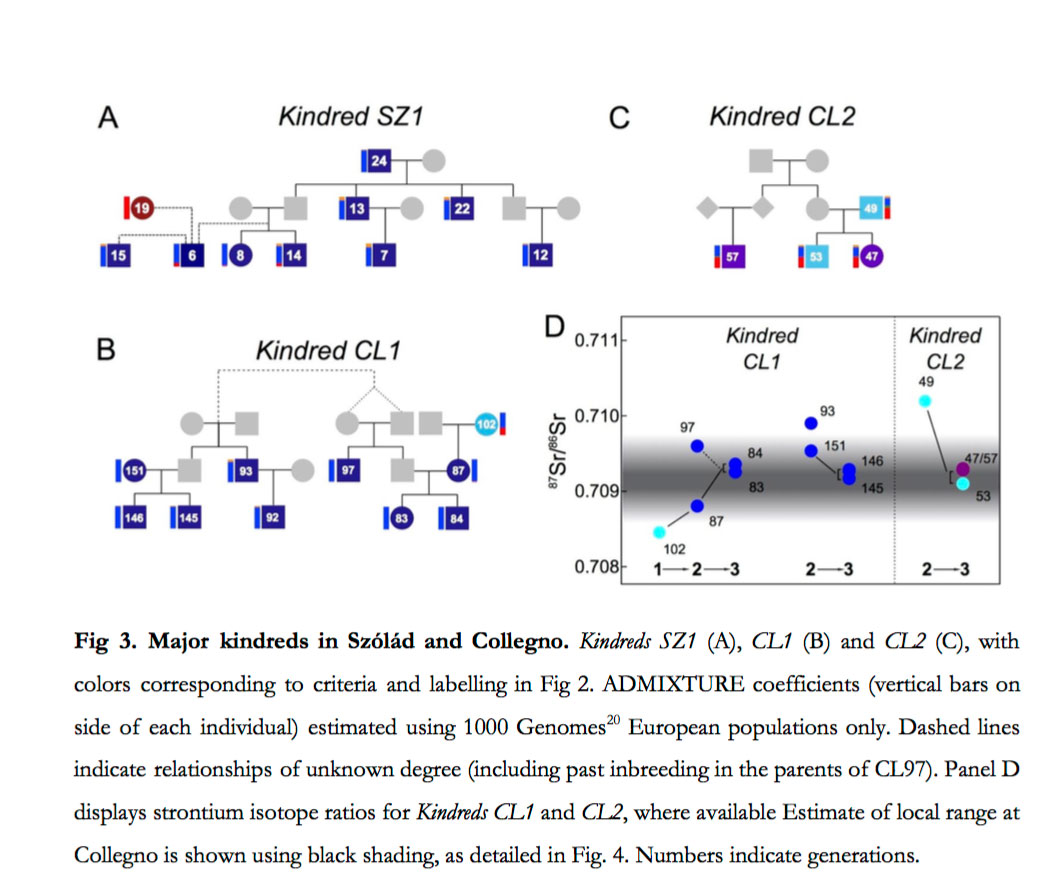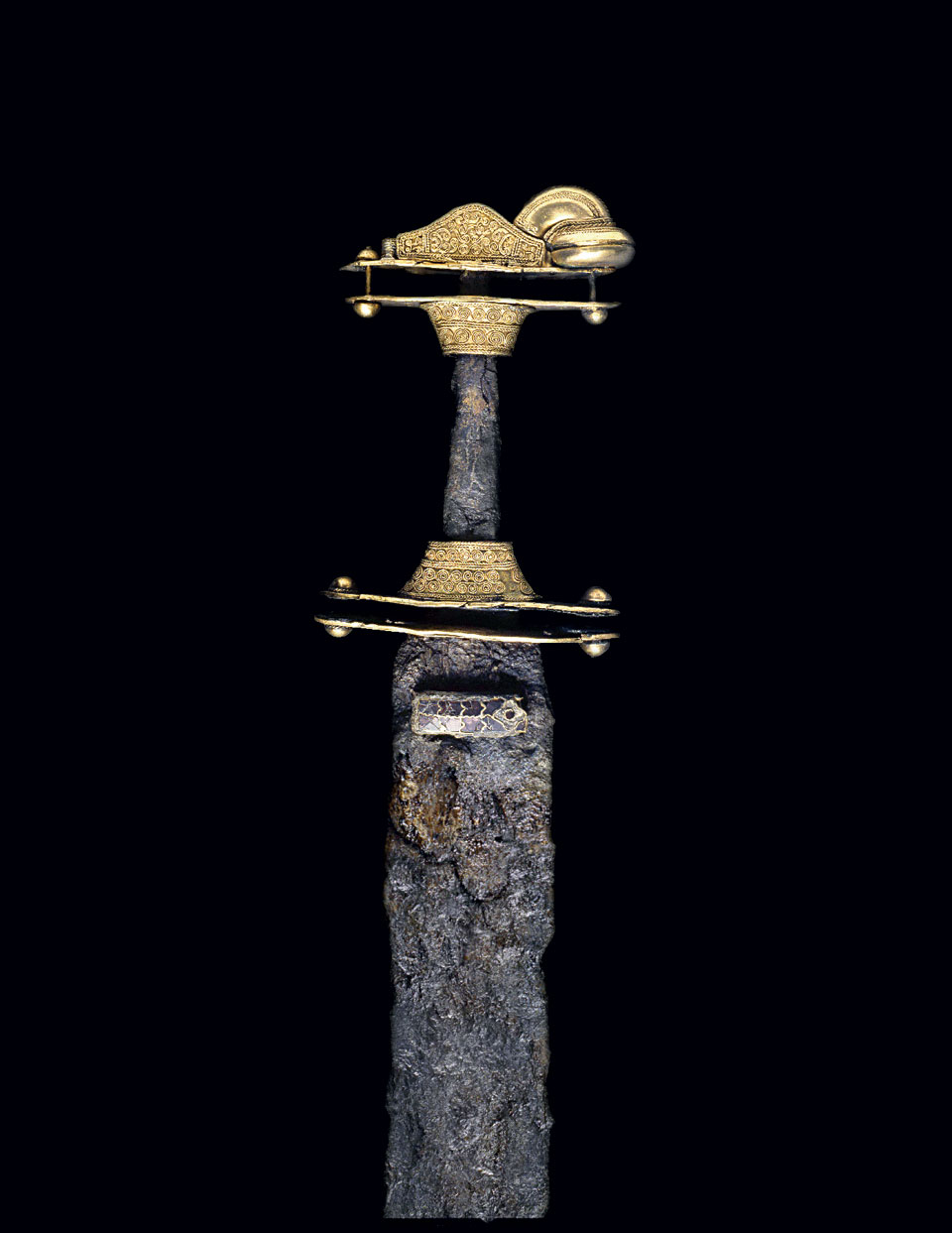“Fara” is an enigmatic term. Traditionally meant to designate an Germanic agnatic clan or lineage as well as a band of brothers, the meaning still eludes us.

The verb *faran (Germ) means to move somewhere, to go, to travel, to wander. The noun, *faru means way, going, journey, course, expedition, march, procession; but also – derived from this – as a retinue, companions, followers, troops, comitatus, hird, housecarls, and following this: family, household, livestock, movables. Finally, it may also be understood as proceedings, adventures or even movable possessions.
The verbal noun often appended to another term as in Englandsfari, Jórsalfari etc. means a person, who “fares” to England, Jerusalem etc. In OE (ge)fara means a companion. Later, in Lyon, a “faramanni” would mean a vagabond, viz “en farende mand (svend)” in modern Danish which may have the equivalent meaning.
The first known use of the word can be found in the Burgundian law, Lex Gundobada, c. 500–516. Here we meet the word fara as a prefix to –manni, faramanni. Of these, we learn that they are barbarians (that is non-Romans) and that they are living with or nearby their Roman landlords and that they are encroaching upon the common land, which they by decree are told to share fifty-fifty with their Roman neighbours. The text, however, does not yield us more information as to how we should understand these “faramanni”. Nor does later use of the word in Fourth Book of the Chronicle of Fredegar, where the word, “Burgundaefarones”, crops up as either noblemen or just people belonging to the Burgundian realm or tribe.
The first known use of the expression derives from the writings of Marius von Avenches, who writes c. AD 580 about the events in 569:
Hoc anno Alboenus rex Langobardorum cum omni exercitu relinquens atque incendens Pannoniam suam patriam cum vel mulieribus vel omni populo suo in fara Italiam occupavit; ibique alii morbo, alii fame, nonnulli gladio interemti sunt.
Translation: This year, Alboin, King of the Longobards, [while] leaving and burning all of Pannonia, his fatherland, with all his army, with wives and all his people occupied Italy in “fara”; and there some were killed by illness, some by hunger, and others by the sword.
(Chronicon Marius Aventicensis MGHAA 11).

It is evident that those who were killed by disease, hunger or the sword were the Italians, thus ‘fara’ in this contexts should in all probability be understood as “raid”, such as it continued to be understood in a later Norse context (viz, fara i Vikingr)
Another translation, though, of this text might, of course, be that he invaded and occupied Italy with a multitude of people (an army of people); or – derived from this – “fara” might be understood as a “military band”. That is: he occupied Italy, [with a multitude of people] organised in bands (of brothers) together with their wives and descendants. In this case, though, the noun should have been in the plural. The most likely understanding is that Alboin went on a raid or what in Latin is called an expedition (expedition).
This is, however, not the meaning behind the paragraph in Rothair’s edict (§ 177) from AD 643, according to which a Freeman is allowed to move freely together with his “fara” (Si quis liber homo potestatem habeat intra dominium regni nostri cum fara sua migrere ubi voluit”. Here it obviously meant his “household” or perhaps even – as a later gloss has it – just “rebus” (things, viz Glossarium Matritense 20).
Nevertheless, it was later explained as designating kindred or descent-groups by Paulus Diaconus. He wrote:
Igitur, ut diximus, dum Alboin animum intendet, quem in his locis ducem constituere, Gisulfum, ut fertur, suum nepotem, virum per omnia idoneum, qui eidem strator erat, quem lingua propria ‘marpahis’ appellant, Foroiulanae civitati et totae illius regioni praeficere statuit. Qui Gisulfus non prius se regimen eiusdem civitatis et populi suscepturum edixit, nisi ei quas ipse eligere voluisset Langobardorum faras, hoc est generationes vel lineas, tribuere. Factumque est, et annuente sibi rege quas obtaverat praecipuas prosapias, ut cum eo habitarent, accepit. Et ita demum doctoris [ductoris?] honorem adeptus est. Poposcit quoque a rege generosarum equarum greges, et in hoc quoque liberalitate principis exauditus est.” (Hist. Lang. II, 9)
When Albion therefore, as we have said, reflected upon whom he ought to make duke in these places, he determined, as is told, to put over the city of Cividale and over the whole region, his nephew Gisulf, a man most suitable, who was his master of horse—whom they call in their own language “marpahis”. This Gisulf announced that he would not first undertake the government of this city and people unless Alboin would give him [the right] to choose for himself the “faras,” that is, the families or stocks of the Langobards. And this was done, and with the approval of the king, he took to dwell with him the noble houses of the Langobards, which he had desired. And thus finally, he acquired the honour of a leader. He also asked from the king for herds of high-bred mares, and in this also he was heeded by the generosity of his chief.
[Transl. from: History of the Langobards. Historia Langobardorum. By Paul the Deacon. Transl. By William Dudley Foulke. University of Pennsylvania Press 1907).
The explanation offered by Paul the Deacon has been described as asynchronous and retrospective, pasting an 8th-century explanation on a 6th-century phenomenon, namely the establishment of the ducal houses and the Friuli nobility, which came to play such a dominant rule in the next phase. However, he does seem to need to explain the concept, which was thus around, when he wrote his Historia Langbardorum in AD 787–95. His readers – non-Lombards – apparently were in need of an explanation.
This is the same meaning, which may be gathered from topographical descriptions and even Italian toponyms. For instance, we hear about the Castellum Farae Brodoroccae, which is also described as Fara filiorum Bredorochi, that is the fara of the sons of Bredoroch. Another example is the Castrum Tornariciae et Pharam, which elsewhere is called Phara Filiorum Guarnerii, the fara of the sons of Guarnerius, that is the sons of “Warinhari” meaning “defending warrior”.
In the end, fara also came to designate a settlement or village, of which a number may be listed. Of these, at least 35 are mentioned before 1200 in Northern Italy. Most of these seem to be located on the outskirts of less accessible valleys and must be designated as in the geographical periphery.
The Farae of Collegno and Szólád?
Recently, new genetical studies have hinted at the specific social reality behind the word “fara”. At least, this is an intriguing hypothesis. More precisely studies of migratory groups of people found in the late 6th century cemeteries at Szólád in Hungary and Collegno in Northern Italy near Torino have succeeded in sampling aDNA, demonstrating that the groups of people living in these settlements could be divided into distinct kindreds. In both settlements, two distinctive kin-groups consisting of an ancestor, his sons, grandsons and even great-grandsons could be identified. These groups of people were furthermore characterised by better health (more protein in the diet) as well as their more richly furnished graves. A common denominator for the two otherwise distinct kin-groups was their common northern- or central European descent. Also, it could be demonstrated that they or at least the first generation of each of the two kin-groups had taken part in migratory wanderings. These findings are among the first results published by the group Medieval Genetics indicating that it might be possible to identify Germanic agnatic patrilocal clans operating in the Migration Period.
FEATURED PHOTO:
Buckle from Testona Moncalieri near Torino. 6th to 7th centuries. © Torino, Museo di Antichità
SOURCES:
Fara.
By Heinrich Beck, Max Pfister and Reinhard Weskus.
In: Reallexikon der Germanischen Altertumskunde, Vol 8.
De Gruyter, Berlin 1994
Barbarian Europe
Karol Modzelewski
Peter Lang 2015
Germanic Kinship Structure
Murray, A. C.
Toronto 1983
Society and Warfare in Lombardy c. 568 – 652
By: Eduardo Fabbro
A Thesis submitted at the Centre for Medieval Studies, University of Toronto 2015.
The post Burgundian and Longobardian “Fara” appeared first on Medieval Histories.
Powered by WPeMatico